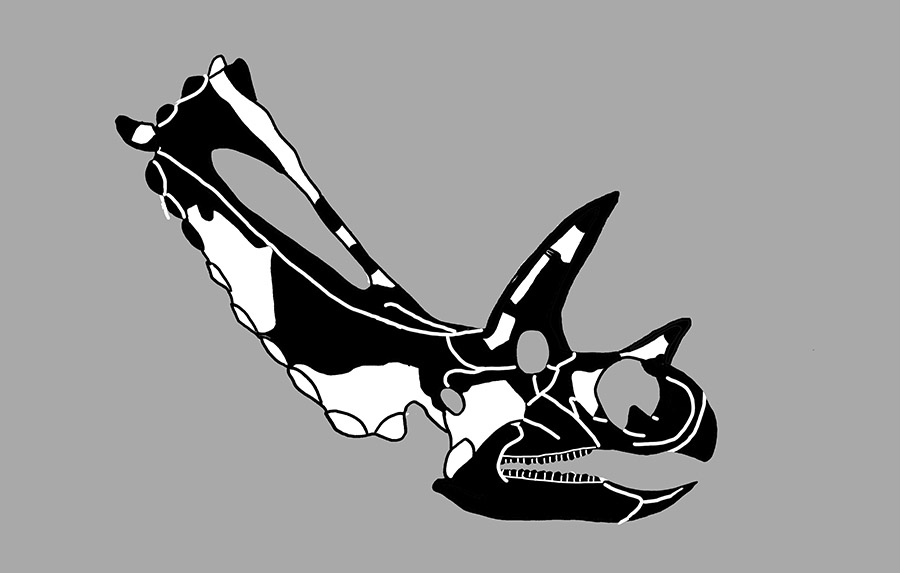
Genus: Bravoceratops WICKS, & LEHMAN, 2013
Etymology: Spanish, bravo, "wild," in reference to the portion of the Rio
Bravo del Norte (Mexican nomencalture) that forms the great curve of the
Rio Grande
(American nomenclature) and defines the Big Bend region of Western Texas and
Northern Mexico, and Greek suffix, ceratops, "horn-face," which denotes membership
in the Ceratopsidae.
Species:
polyphemus WICKS, & LEHMAN,
2013
Etymology: From the Colossal cyclops, Polyphemus, of Greek mythology in allusion
to the midline depresson or "socket" located on the mediodistal parietal
bar
of the holotype for presumed attachment of a protruding epiparietal.
Holotype: TMM 46015-1
Locality: "Hippiewalk" site (TMM 46015; = BIBE P-214), northeast of Paint
Gap Hills, Big Bend National Park, Brewster County, Texas.
Note: Exact locality data are aavailable at the Vertebrate Paleontology Laboratory
of teh University of Texas at Austin, and the Division of Science and Resource
Management, Big Bend National PArk, Texas, USA.
Horizon: Base of the Javelina Formation.
Biostratigraphy:
Age: Late Campanian to Early Maastrichtian Stage, uppermost Senonian subepoch, Upper Gulf Epoch, Late Cretaceous.
Material: A fragmentary, disarticualted adult skull including braincase with detached supraoccipital, parts of both supraorbital horncores and rear part of the left postorbital, posterior part of the right nasal, parts of fused nasals and epinasal, both jugals, both quadrates, both quadratojugals, parietal median bar with attached midline epiparietal, detached lateral epiparietal, parts of right squamosal, coronoid process of both dentaries, fragment of dentary lingual plate, and numerous unidentified skull fragments.

Bravoceratops polyphemus (after WICKS, & LEHMAN, 2013), Holotype: TMM 46015-1.